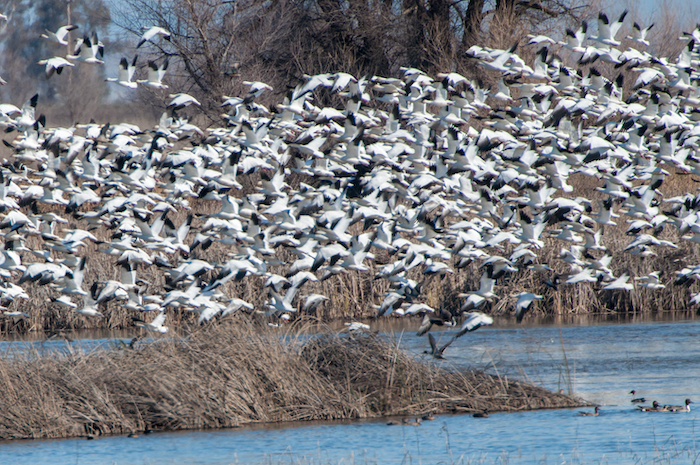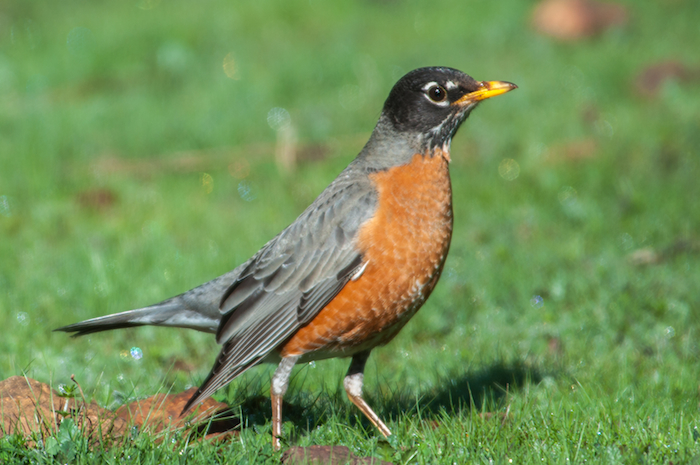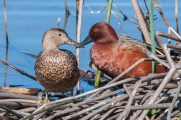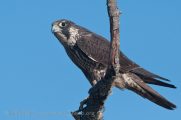
How many feathers are on a swan? How many miles does a black swift fly in a year? How many breaths does a hummingbird take in ten seconds? Numbers can tell fascinating stories. Unfortunately, they can also become a blur that fails to have meaning.
As a teacher, some years back I was exposed to the idea of innumeracy, the math equivalent of illiteracy. We know that habits of both thoughtful reading and number evaluation expand our scope of competence as citizens and consumers.

Birds, however, show only rudimentary math abilities. In one study, researchers let robins watch as they dropped two worms into a box, but they rigged the box with an upper layer holding only one worm. The robins subsequently went to the box and, on finding only one worm where they saw two dropped, pecked at the box long and hard in apparent frustration. When the researchers allowed access to both worms, the birds gobbled the two and quickly moved on.
Other studies indicate that parrots can count up to six, and crows to eight. Cormorants used by fishermen on the Li River in China are normally allowed to eat every eighth fish they catch, and have been observed after catching seven fish refusing to dive until their neck ring is loosened–a sort of minimum-wage strike among the birds.
Pigeons have learned to peck at groups of objects in order of the number of objects in them. Interestingly, having learned to peck in order 1, 2, 3, they can continue with numbers beyond their training, pecking in order groups of up to eight, clearly showing some arithmetic sense. Above eight, well, researchers have not boldly gone into the uncharted territory of nine and beyond.
Of course, mathematical sense probably has limited use for most birds. Mostly bird intelligence trends toward other skills such as long-distance navigation, nest-weaving, and music.
For us, math has more varied meanings: finding the best buy with grocery store arithmetic, understanding interest rates for both investments and loans, calculating income and cost of living. In business and government, arithmetic shows potential profits and losses, and allows planning for pandemics, climate change, and the quantity of waste products of our still-growing human population. Understanding these numbers can help us design efforts to treat one another humanely and leave a beautiful world behind us.
Regarding birds, I used to use ballpark figures: ten billion birds in winter in North America, twenty billion in spring right after the nesting season. But now the winter number is cut to 7 billion, a 30% decline in my lifetime. These numbers are echoed and exceeded in studies of fisheries and insects. They are numbers that, for moral, esthetic, and practical reasons we should not ignore. They speak of degrading habitats worldwide that increasingly cannot support a full array of wildlife or human life. How many more millions of acres are becoming unfarmable? How many nations are becoming unable to feed themselves, and so feeding only their wealthy and their thugs, turning how many more people into refugees and extremists?
Right now we are immersed in dealing with a coronavirus, whose numbers are potentially brutal. Beyond that priority we must look ahead to climate change, whose numbers are yet more disastrous and longer-term. We form and manage those numbers through our lifestyles, our purchases, our votes, our literacy and our numeracy. They are numbers that can guide us well or can undercut both our direct prosperity and our world’s wealth of swan feathers, black swift miles, and hummingbird breaths. The numbers are important.


